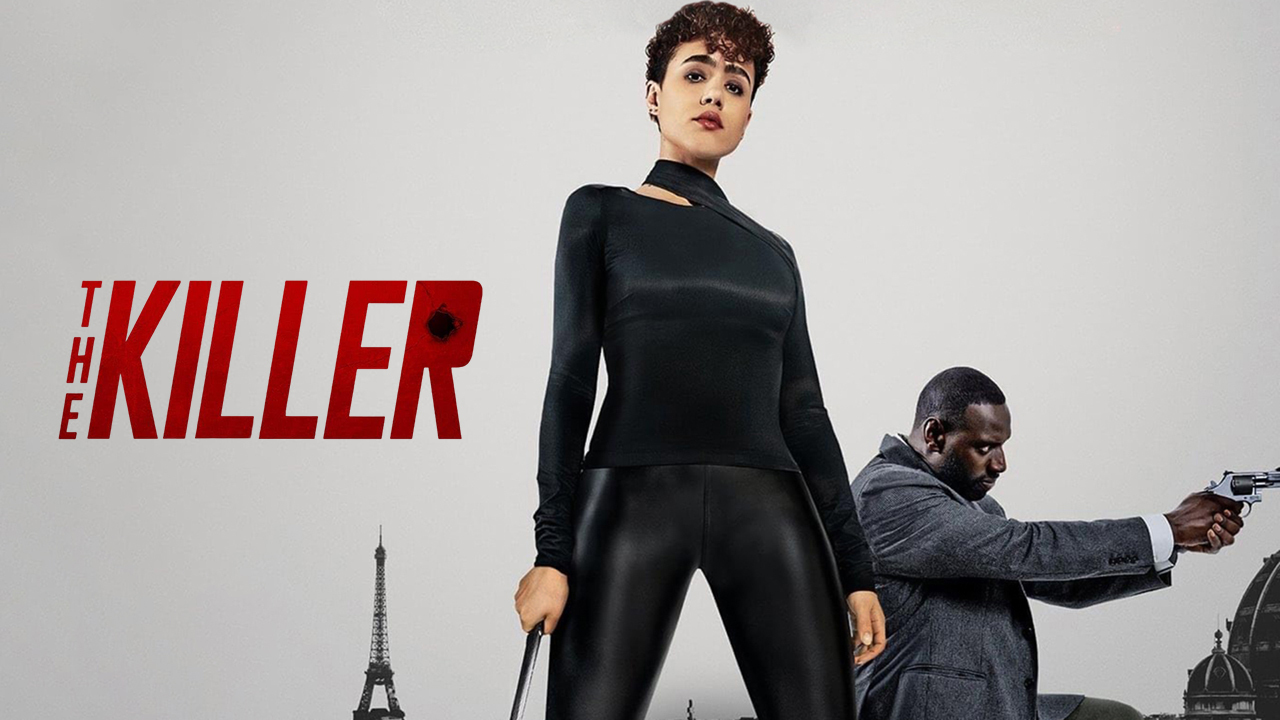
"The Killer" (2024) presents a fresh take on John Woo's iconic 1989 film, yet struggles to honor its legacy. With a gender-swapped lead, Zee, portrayed by Nathalie Emmanuel, the film explores complex moral dilemmas amid a gripping narrative. While the action choreography excels, particularly in graveyard shootouts, the uneven pacing and underdeveloped character arcs detract from the overall impact. The relationship between Zee and Sey captures the tension between justice and vengeance but lacks depth. Though visually striking, the remake leaves viewers yearning for the emotional resonance of the original; further insights await those who seek them.
Film Background
Historically, the influence of John Woo's original "The Killer" (1989) on the action genre is frequently acknowledged, setting a high bar for any subsequent adaptations.
The 2024 remake, directed by Woo himself, faces significant remake challenges, primarily the task of honoring the original's legacy while introducing a fresh narrative.
Character reinterpretation plays a vital role in this endeavor, as the gender-swapped leads fundamentally alter the original character dynamics.
This shift invites a re-examination of moral complexities and emotional stakes, yet risks alienating purists who cherish the established archetypes.
As previous attempts at remaking the film have faltered, the 2024 version must navigate these intricate dimensions to resonate with both new audiences and veterans of the genre.
Plot Overview
A compelling narrative unfolds in the 2024 remake of "The Killer," centered on the character of Zee, portrayed by Nathalie Emmanuel, who navigates the treacherous world of assassination.
As a stealthy assassin, Zee's character motivations are complex and compelling, particularly when her latest assignment in Paris spirals into a moral crisis. This pivotal moment generates significant narrative tension, especially with the investigation led by the tenacious cop Sey, played by Omar Sy.
The juxtaposition of Zee's internal struggle against the backdrop of crime and morality is both engaging and thought-provoking.
Key elements include:
- Zee's evolving moral compass
- Finn's manipulative influence
- Sey's determined pursuit of justice
- The unfolding consequences of choices
- The exploration of power dynamics
Character Dynamics
The exploration of character dynamics in "The Killer" (2024) reveals a significant shift in relationships, particularly with the gender-swapped lead roles of Zee and Finn.
Zee's transformation from a cold assassin to a figure grappling with moral dilemmas highlights the film's focus on internal conflict. Her contrasting motivations against Finn's manipulative drive create a compelling tension that shapes their interactions.
Meanwhile, Sey's motivations as the investigating cop introduce complexity, as he embodies the law's pursuit of justice while wrestling with his own ethical boundaries. This interplay deepens the narrative, particularly through Sey's evolving perspective on Zee, who is both a target and a reflection of his own struggles.
However, the lack of development for supporting characters leaves some dynamics feeling underexplored.
Direction and Cinematic Elements
John Woo's direction in "The Killer" (2024) showcases a blend of signature stylistic elements and contemporary cinematic techniques, although the execution often falls short of expectations.
While the film attempts to embrace visual storytelling through striking imagery, it frequently stumbles in pacing and engagement. The following elements stand out:
- Signature slow-motion sequences that are iconic to Woo's style.
- Symbolic use of environments, such as churches and graveyards, to enhance themes.
- Limited character depth, which undermines emotional investment.
- Uneven narrative pacing, leading to a mid-film sag.
- Choreographed action scenes, though impressive, lack the energetic flow of the original.
Ultimately, the film's cinematic techniques may impress but fail to resonate deeply, diminishing its impact.
Action Sequences and Choreography
While the direction and overall pacing of "The Killer" (2024) may leave some viewers wanting, the action sequences stand out as a highlight, showcasing John Woo's renowned choreography.
The film employs innovative choreography techniques that elevate the visceral impact of each encounter, particularly during the electrifying graveyard shootout. Woo's meticulous attention to detail manifests in the seamless integration of slow-motion effects, enhancing the action realism that has become his signature.
Each movement feels deliberate, choreographed to convey both the intensity of conflict and the emotional stakes at play.
Despite the film's shortcomings in character development and narrative flow, the action sequences provide a fascinating spectacle, affirming Woo's mastery in crafting visually arresting and emotionally resonant moments in cinema.
Themes of Morality and Crime
In exploring the intricate themes of morality and crime in "The Killer" (2024), one finds a compelling narrative that challenges traditional notions of right and wrong.
Central to the film is the moral ambiguity faced by Zee, an assassin grappling with the ethical implications of her profession. This internal conflict is juxtaposed against Finn's self-serving motives, which highlight the complexities of crime ethics.
The relationship between Zee and Sey, the investigating cop, further complicates the moral landscape, inviting viewers to question the nature of justice and vengeance.
- The duality of good and evil
- Consequences of personal choices
- The impact of power dynamics
- The humanization of the assassin
- The quest for redemption and identity
Cultural Impact and Reception
Amidst a landscape increasingly dominated by streaming platforms, "The Killer" (2024) has sparked discussions regarding its cultural impact and reception, particularly in relation to its predecessor.
While the original film by John Woo is revered for its groundbreaking action sequences, the remake faces scrutiny over streaming accessibility issues that hinder a new audience's engagement with the classic.
Many viewers express disappointment, grappling with high remake expectations that the 2024 version fails to meet. Critics argue it lacks the original's passion and originality, suggesting a disconnection between the film's intent and its execution.
As the decline of physical media continues, "The Killer" (2024) serves as a reminder of the challenges faced by remakes in honoring and revitalizing beloved cinematic legacies.
Final Thoughts and Rating
How effectively does "The Killer" (2024) capture the essence of its iconic predecessor? While it attempts to explore character evolution through Zee's moral conflict, the film ultimately lacks the narrative depth that marked John Woo's original.
The gender-swapped dynamic introduces fresh angles but feels underdeveloped, leaving the supporting characters, like Jenn, insufficiently fleshed out.
- Exceptional action choreography, particularly in graveyard sequences
- Pacing issues detract from overall engagement
- Complex cop-killer relationship adds tension yet feels superficial
- Aesthetic choices echo Woo's style but miss the mark on emotional resonance
- Disappointment in failing to honor the original's legacy

Samantha Yates is a dedicated journalist at BootItems.com, delivering breaking news and in-depth stories across various topics. With her keen eye for detail and passion for informative reporting, Samantha keeps readers up-to-date on the latest developments in politics, technology, and global affairs.